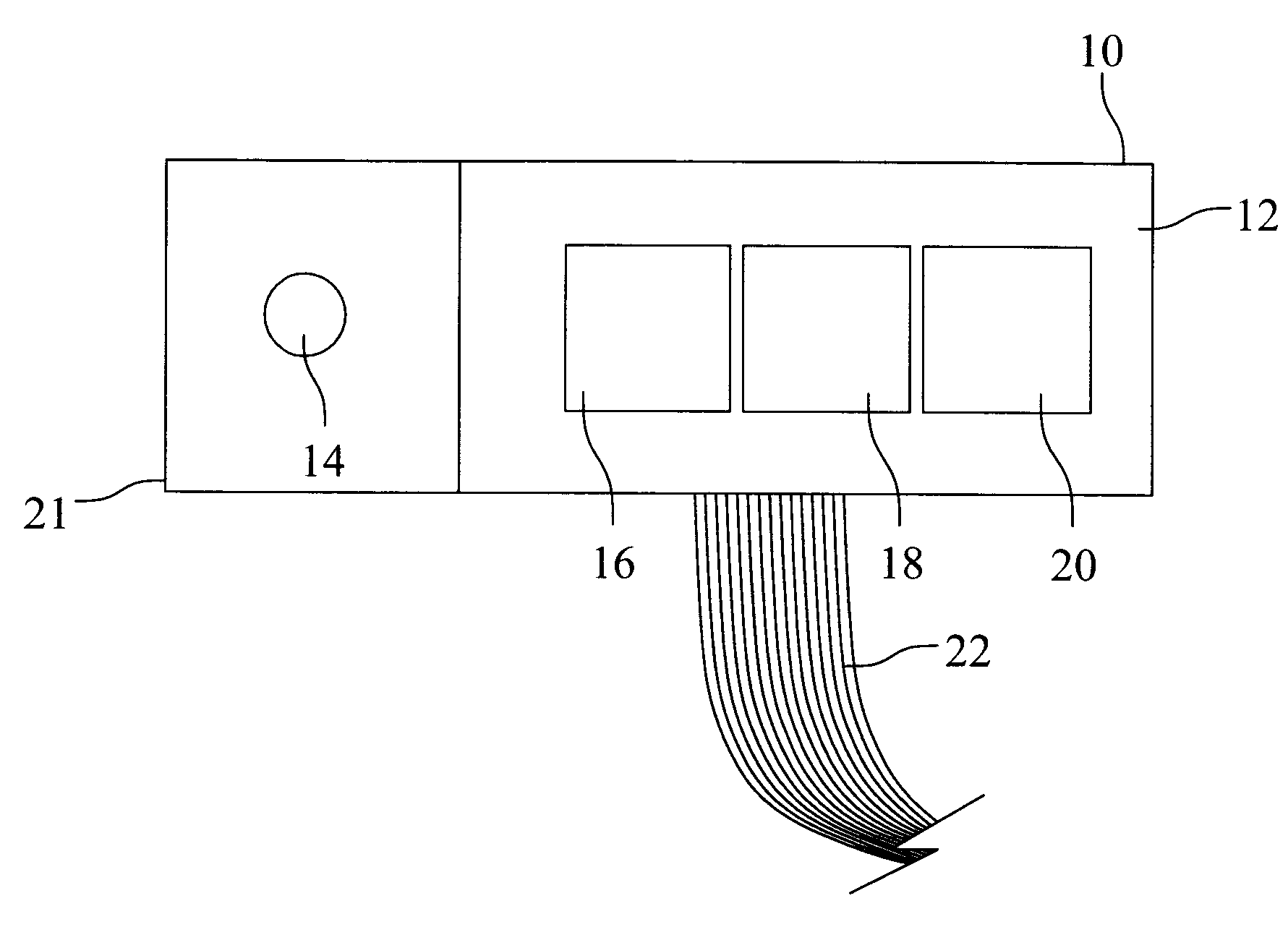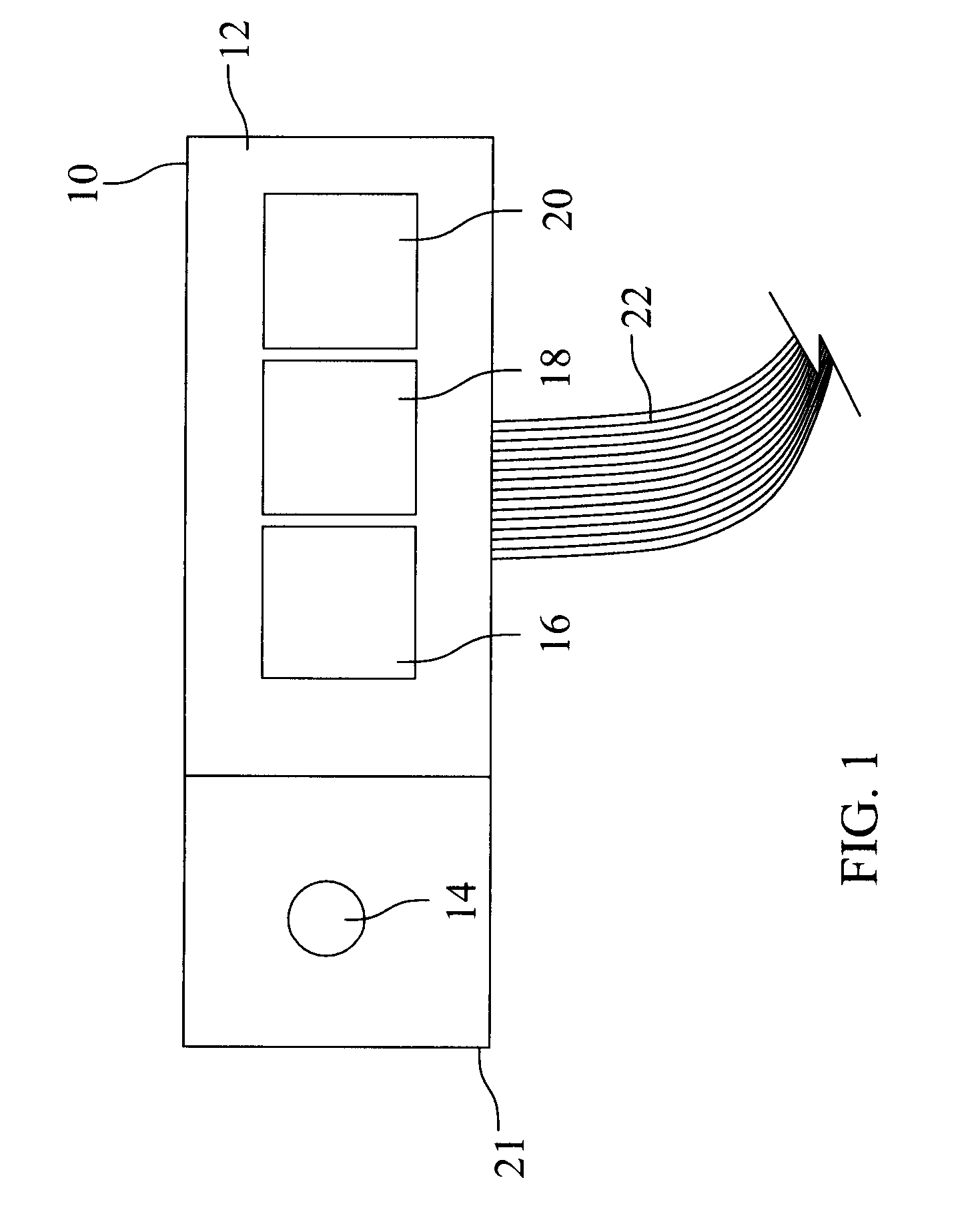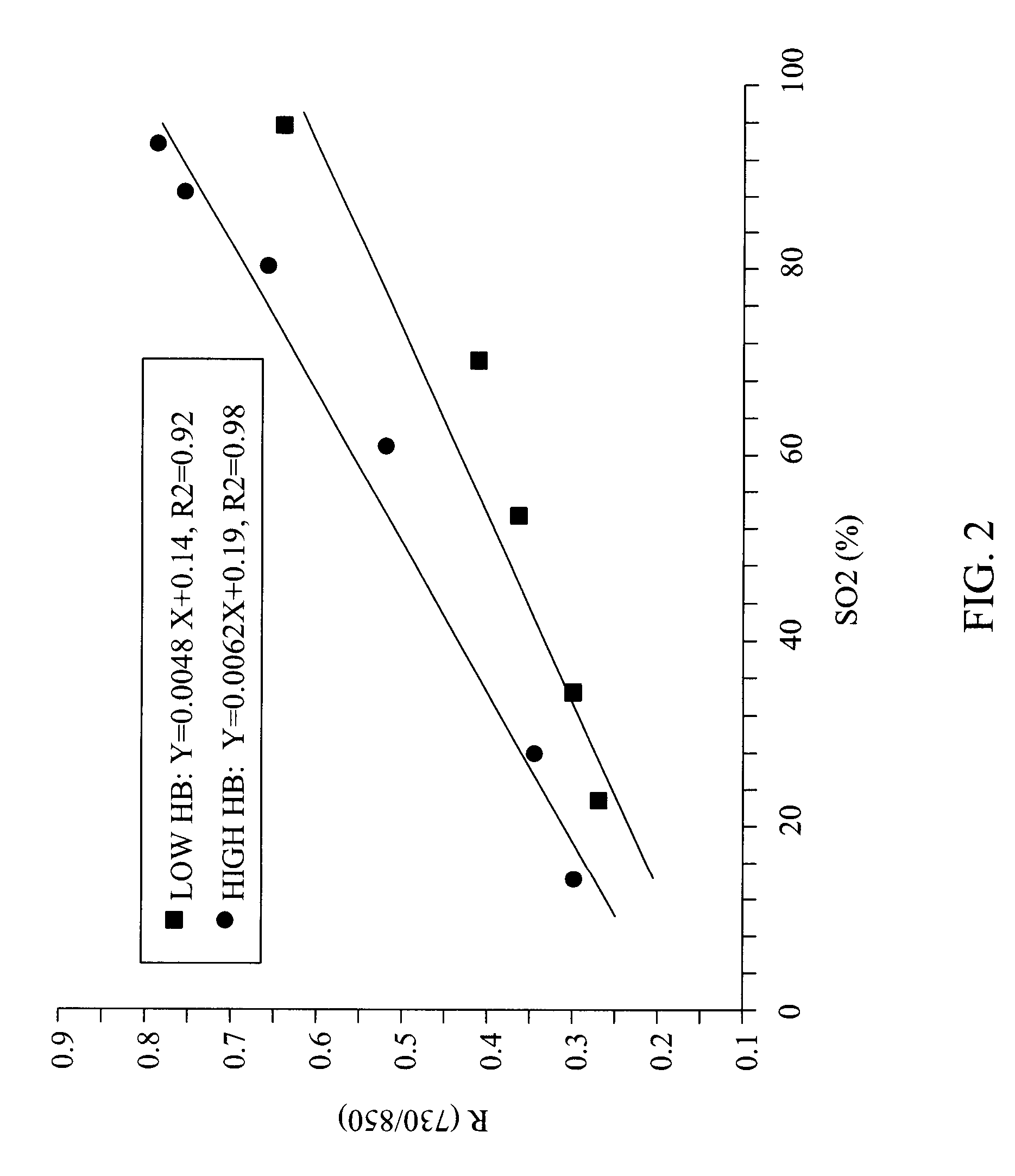Multi-Wavelength Spatial Domain Near Infrared Oximeter to Detect Cerebral Hypoxia-Ischemia
a hyperxia-ischemia and infrared oximeter technology, applied in the field of cerebral o2 saturation measurement and cerebral hypoxia-ischemia detection in infants, can solve the problems of nirs monitors not being able to provide a clinically relevant, accurate, reliable number,
- Summary
- Abstract
- Description
- Claims
- Application Information
AI Technical Summary
Problems solved by technology
Method used
Image
Examples
Embodiment Construction
[0027]The present invention is generally directed to methods and apparatuses for measuring cerebral O2 saturation and detecting cerebral hypoxia-ischemia using multi-wavelength near infrared spectroscopy (NIRS). In practice, an apparatus like the embodiments described herein is secured to the head of a patient believed to be potentially suffering from cerebral hypoxia-ischemia. An exemplary embodiment of the present invention is designed to be non-invasive—the exemplary apparatus is generally placed such that the bottom surface of the probe is in contact with the outer surface of the patient's forehead, a method requiring no incision or otherwise invasive procedure.
[0028]Once the apparatus is secured, light of a particular near infrared wavelength is be sent through an amount of brain tissue using a near infrared light emitter positioned on the apparatus. At least three intensities of the light that passes through the amount of brain tissue is then measured using at least three phot...
PUM
 Login to View More
Login to View More Abstract
Description
Claims
Application Information
 Login to View More
Login to View More - R&D
- Intellectual Property
- Life Sciences
- Materials
- Tech Scout
- Unparalleled Data Quality
- Higher Quality Content
- 60% Fewer Hallucinations
Browse by: Latest US Patents, China's latest patents, Technical Efficacy Thesaurus, Application Domain, Technology Topic, Popular Technical Reports.
© 2025 PatSnap. All rights reserved.Legal|Privacy policy|Modern Slavery Act Transparency Statement|Sitemap|About US| Contact US: help@patsnap.com



